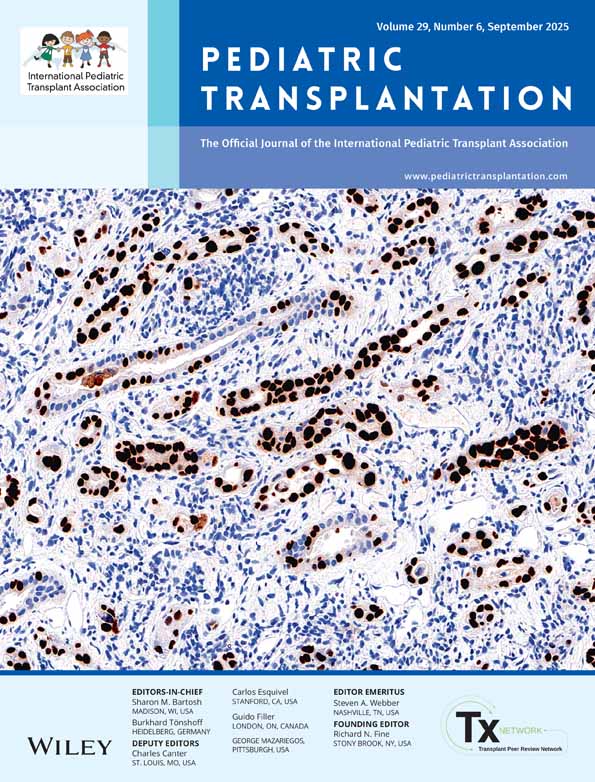Limited surgical interventions in children with posterior urethral valves can lead to better outcomes following renal transplantation
Abstract
Abstract: There is currently no consensus as to the most appropriate means by which children with posterior urethral valves (PUV) are to be managed prior to transplantation. We compared (i) renal allograft survival and function in patients with PUV vs. those with non-obstructive causes of ESRD and (ii) graft outcomes in children who had limited interventions (Group 1) vs. those with more extensive urologic surgeries to decompress the urinary tract (Group 2). Twenty-six pediatric renal transplant recipients had ESRD due to PUV (Group 1, n = 16; Group 2, n = 10). The study group was compared to 23 matched controls with ESRD due to non-obstructive causes. Five yr patient and graft survival was similar in all patients with PUV (Groups 1 and 2) when compared to all other kidney recipients in the transplant program, 96.2% vs. 98.0% and 87.5% vs. 87.0%, respectively. Although calculated creatinine clearance (Ccr), was similar between the PUV group and controls for the first 4 yr, the 5 yr graft function was significantly lower in the PUV group. (53.7 ± 15.7 vs. 70.2 ± 21.0 mL/min/1.73 m2; p = 0.03). When the two PUV groups were compared, graft survival was equivalent, but graft function was significantly better at 5 yr in Group 1(60.4 ± 10.8 vs. 33.8 ± 9.3 mL/min/1.73 m2; p = 0.02). Thus, patients with PUV managed by a limited intervention approach of vesicostomy with delayed valve ablation or primary valve ablation, had better outcomes. When ESRD is virtually certain, additional pre-transplant surgeries affecting the urinary tract should be avoided.




